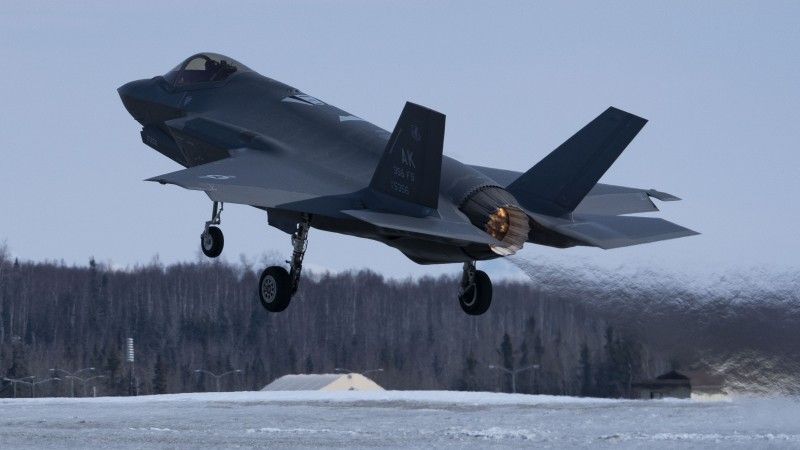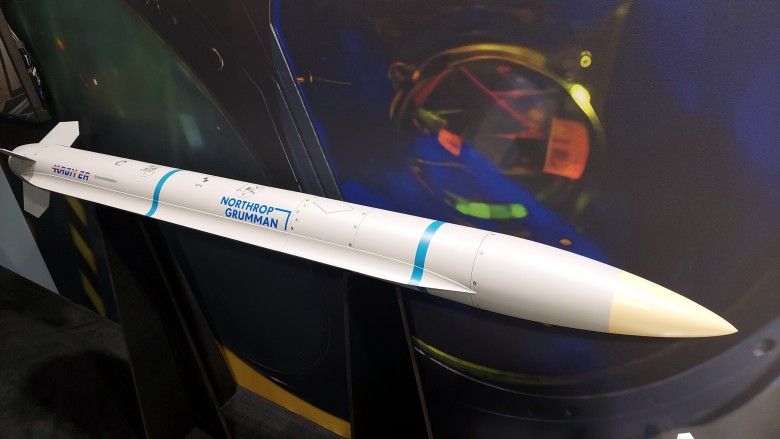“New Weapons for the Polish F-35 Are Getting Closer” [EXCLUSIVE]

Photo. Airman 1st Class Julia Lebens
Acquisition of AARGM-ER missiles (Advanced Antiradiation Guided Missile – Extended Range) for the Polish Armed Forces enters a new phase - Defence24.pl found out. Contract should be signed in the upcoming months.
As the Armament Agency informed, while answering a question asked by the Defence24.pl, preparation for the purchase of antiradiation AARGM-ER missiles has entered a new phase. This matter is being processed and an respective contract should be signed within the next months, most likely at the start of the next year. Polish F-35A 5th generation fighters will then acquire a special type of weapon used to strike at enemy’s air defence systems deep within their area of control.
AARGM-ER is a new generation antiradiation missile, introduced into service by the United States of America. It was created by combining the baseline AARGM missile’s guiding system, digital radiolocation guided warhead, active high frequency radar and the INS/GPS system, with the new airframe and propulsion system. This – in turn – allows for this missile to be carried in the inner weapons bay of the F-35 Air Force and Navy fighter variants A and C, and would further increase its speed and operational range. F-35 fighters in the B variant (which belong to the Navy) can carry AARGM-ER under their wings on specifically designed rails, similarly to the Super Hornet fighters and the electronic warfare EA-18G Growler fighters which are the first officially recorded carriers for this missile.
Both the AARGM-ER (Extended Range) and the standard AARGM missiles are capable of countering the radiolocation systems, but they can also be used outside of this scope if the coordinates are known. Additionally high-frequency radar and the navigation system give the capabilities of countering radars even after they go silent, and even if they are on the move already heading outside of the expected missile detonation range.
Though this information isn’t officially confirmed, it is estimated that the AARGM-ER can destroy targets on the 250 KM distance and perform a flight at mach-4. One of the main reasons for the design of this missile was increase of the survivability of the fighters and its pilot as compared to the AARGM which combined the previously mentioned guiding systems and new control systems, while holding the same framework and thrusts from the old HARM missiles. Thanks to that, AARGM-ER is meant to be capable of destroying to newest generation anti-air systems like the Russian S-400.
Read more
Poland acquired approval to purchase AARGM-ER missiles in April 2024. The notification of US Department of State regarded the purchase of up to 360 missiles (and support equipment, training etc.) at a maximum cost of $1.275 billion. About the same time US government authorized sale of the same missiles to the Netherlands, where they will arm 58 F-35A fighter jets. missiles are available, 58 F-35A fighters. Actually Finland has become the first European user of AARGM-ER missiles. independent user of AARGM-ER, formally Finland, because Helsinki will be available in 2024 - a year after the Department of State consents - to the supplier for the supply of these missiles. Australia was included in the same AARGM-ER purchase bin, which, unlike Finland, is already equipped with standard AARGM missiles, as well as older HARM missiles. Helsinki signed the contract for these missiles in October 2024, a year after US Congress approval on this procurement. Australia has obtained approval for AARGM-ER purchase in the same month, being already – opposite to Finland, Netherlands and Poland – the user of baseline AARGM as well as older HARM missiles.

Photo. Robert Czulda
Let us add that Poland has expressed interest in purchasing AARGM-ER antiradiation missiles but also AARGM baseline missiles, which for several years have been considered for the F-16. Market analysis regarding the acquisition of antiradiation missiles began in 2016. In 2018, the request for price and availability (LOR P&A) was sent to the American side, both for the baseline AARGM and AARGM-ER missiles. However, the purchase of baseline AARGMs is now becoming less likely, especially considering the fact that Poland – unlike Germany, Italy or Australia, which have stocks of old HARM missiles to be converted into baseline AARGMs – would have to purchase them additionally. Their availability is questionable. US has already donated a large number of HARMs to Ukraine, replacing them, among others, with the newly produced AARGM-ER. The manufacturer, Northrop Grumman, announced that it is increasing its potential to produce AARGM-ER missiles. Therefore, it cannot be ruled out that in the future, after finalizing integration with the F-35s, AARGM-ER will also be integrated with other platforms.
However, this is a song of the future. For now, it is necessary to finalize the contract, and the next step will be to train Polish pilots and ground crews in specific tactics of using antiradiation missiles, which generally target air defense radars placed on ground systems or ships. At the same time, it will be necessary to create and update a databases on threats posed by enemy air defense radars.
Read more
Poland will reinvent these capabilities basically from scratch, just like its allies from Finland and the Netherlands. Although in the past post-soviet Kh-25MP (AS-12 Kegler) antiradiation missiles were used on Su-22M4 fighters, but they were shaped in a different era and designed to respond to completely different threats, the old generation Western air defense systems such as MIM-23 Hawk and MIM-14 Nike Hercules. Let us add that despite the fact the ability to use antiradiation missiles has been considered the critical combat capability in NATO, countries such as Great Britain and France – manufactures as well as users of ALARM and ARMAT systems – abandoned them after the end of the Cold War. Antiradiation missiles are an important tool to ensure the freedom of air operations in the conditions of strong antiaircraft defense and should be used in cooperation with other means, such as rocket artillery or radioelectronic reconnaissance systems.





